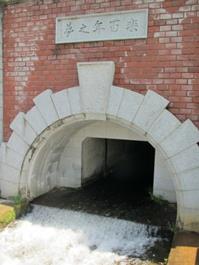History of Lake Biwa Canal

Kunimichi Kitagaki, who was appointed governor of Kyoto Prefecture in February 1881, devised a plan for the Lake Biwa Canal Project, by which water would be channeled from Lake Biwa to Kyoto and utilized for the city’s industrial development. At that time the design and supervision of large-scale infrastructure works in Japan were entrusted to foreign engineers, but for this project Kitagaki chose Sakuro Tanabe, who had only recently graduated from the Imperial College of Engineering (the present-day University of Tokyo). The Lake Biwa Canal Project therefore became the first large-scale civil engineering project undertaken in Japan with a Japanese engineer in charge and most materials procured domestically.
Work on Lake Biwa Canal No. 1, up to the Kamogawa river junction, was started in June 1885 and completed in March 1890. The original schedule was to use the water for such purposes as waterway transportation, waterwheels, irrigation, and fire-fighting, but midway through the construction it was decided also to use the water for hydroelectric power generation, which had been successfully developed in the United States. This elaboration of the project led to the opening of Japan’s first electric-powered streetcar service in Kyoto in 1895.